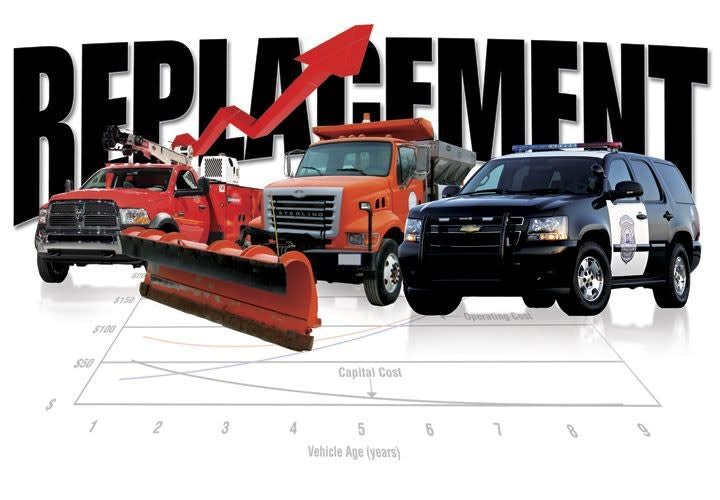Fleet replacement funding requirements are a function of the way in which an organization pays for or finances vehicle acquisitions. If vehicle acquisitions are financed through ad hoc appropriations of cash and outright purchase, year-over-year replacement funding needs are every bit as volatile as spending needs. This is because cash financing involves paying for a vehicle in full at the time it is acquired and placed in service, and because the confluence of replacement dates for the many vehicles and different types of vehicles in a typical government fleet results in peaks and valleys in the annual number of replacements.
Many organizations believe cash payments are the cheapest way to replace fleet assets. Interest charges are not involved in this financing method, as is the case with leasing, loans, or other types of "pay-as-you-go" financing. Thus, it would appear an economically as well as fiscally prudent way to acquire vehicles.
Such thinking overlooks the fact, however, that using cash to finance fleet replacement costs creates the volatile funding requirements illustrated in Chart 3 (see pdf). While near-term peaks and valleys in annual replacement spending needs sometimes can be eliminated by manipulating the timing of the replacement of individual vehicles, no amount of such manipulation completely eliminates year-to-year fluctuations in spending and, hence, funding needs over the long term.[PAGEBREAK]
Volatile funding requirements, in turn, almost always result in deferring some replacement purchases in years of peak spending needs and/or weak economic conditions. For instance, the likelihood the city whose fleet replacement costs are shown in Chart 3 would actually spend more than 10 times as much in 2016 on the purchase of replacement vehicles as it would spend in 2011 is virtually zero.
Organizations that finance fleet replacement costs with cash usually have older fleets, large replacement backlogs, high vehicle maintenance and repair costs, and higher total costs of fleet ownership than organizations that use a financing approach allowing incremental payments for vehicle acquisitions. To be sure, for organizations whose financial resources are so great relative to fleet costs, paying for vehicles with cash is never a problem. However, such organizations tend to be the exception, rather than the rule.












